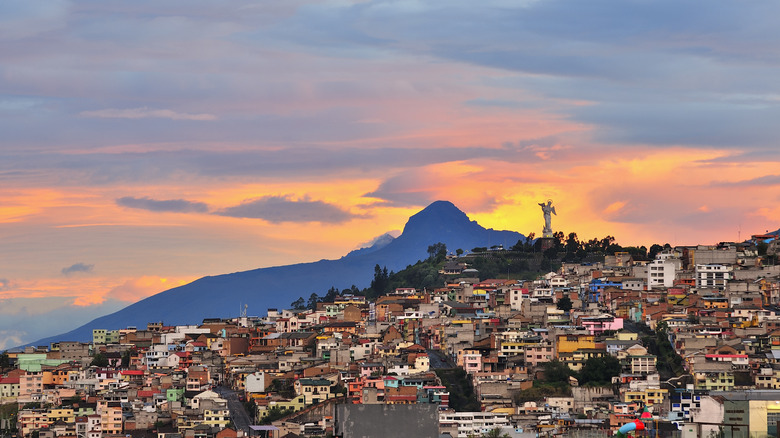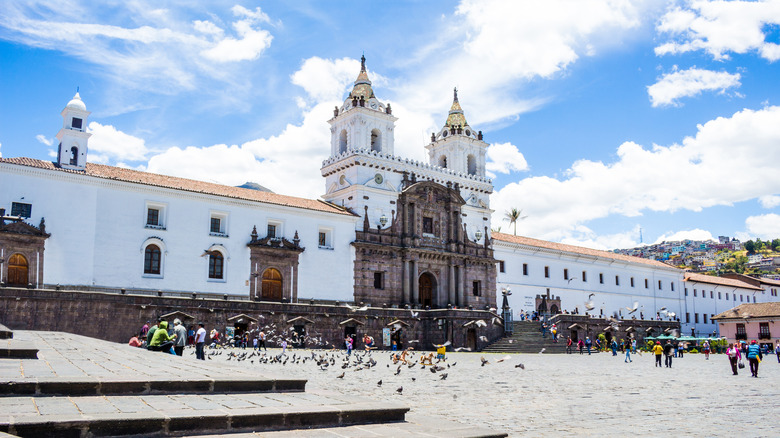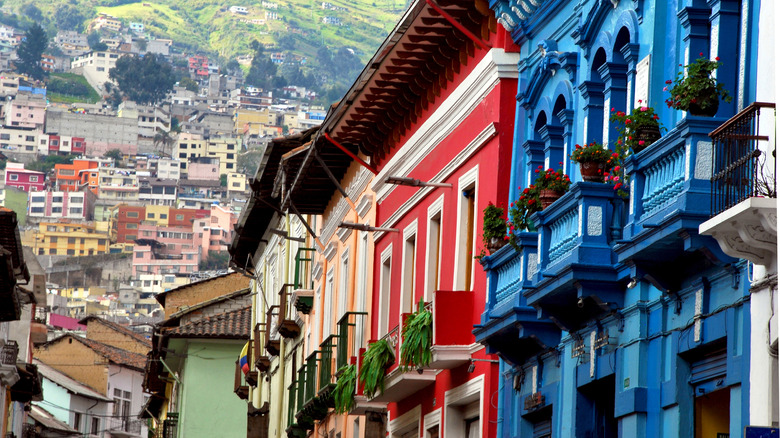Learn More About Spanish History At One Of The Oldest Cities In South America
The Spanish colonized over 30 modern day countries, Ecuador being one of them. Quito, the capital, shows remnants of their ruling with its well preserved architectural structures that are, for the most part, open to the public to visit and explore.
Before Quito became Quito, it was a thriving Incan capital city. In an attempt to deter conquistadors, the Incans destroyed their own capital. Unfortunately, this didn't go as planned, since the Spanish simply built Quito on top of the ruins. Spanish colonial rule was ushered in and proved to be harsh for the indigenous people who lived there. After bloody conquest and disease, they were forced into labor. In the 1500s, the Spanish began to bring in enslaved individuals from Africa to work plantations and mines in the country, as well as serve in households.
Nowadays, you can learn this history and more while visiting the grand Catholic churches the Spanish built, as well as other structures and city layouts that were products of their colonial rule.
Top sites to visit
Quito was declared a must-see UNESCO World Heritage city back in the 1970s; so if you find yourself there, you'll have a seemingly endless list of historical places to visit. Some of the top spots include the Fundación Iglesia de la Compañía, Old Town, and Basilica del Voto Nacional.
Fundación Iglesia de la Compañía, which translates to the Church of the Company of Jesus, took over a century to be completed. Work began in 1605 and finished in 1765. Its interior reveals beautifully patterned arches and ceilings and portrait paintings pinned on the walls. It's a Jesuit church, and you can learn more about the religious influence of the Jesuits on the country while there.
Next, there's Old Town. Here, you'll find the Plaza de la Independencia amongst other old, charming buildings. The plaza was built in the 1600s but it wasn't until 1909 that a statue celebrating the country's independence was installed. It's a bustling and colorful part of the city that's often filled with tourists. Churches and shops line the cobblestone streets. You can sign up for a walking tour so you don't miss out on the historical significance of the area.
The Basilica del Voto Nacional was built much later than the aforementioned spot. Its construction began in the late 1800s, and it was never completed. According to local legend, the world will end if it ever is.
Other sites to see
Another lovely spot to visit is the Catholic Church of Convent of San Francisco. It's Quito's largest colonial structure. Construction started in the 16th century but wasn't finished until much later. It's best known for its thousands of art pieces and its beautifully decorated interior. You can take a guided tour to see and learn about the significance of the structure.
If you want to see the quaint side of the city, take a stroll along the Calle de La Ronda, a lively street full of music and colonial buildings. It's not very large, but it's a cute spot to visit if you're in the area.
We've only mentioned a handful of historic sites to see in Quito, but there are plenty more to visit and explore on your trip. Overall, Quito is an exciting city to visit, especially if you have a love for history. So next time you're looking to learn and explore, consider planning a visit to this budget-friendly vacation destination.


